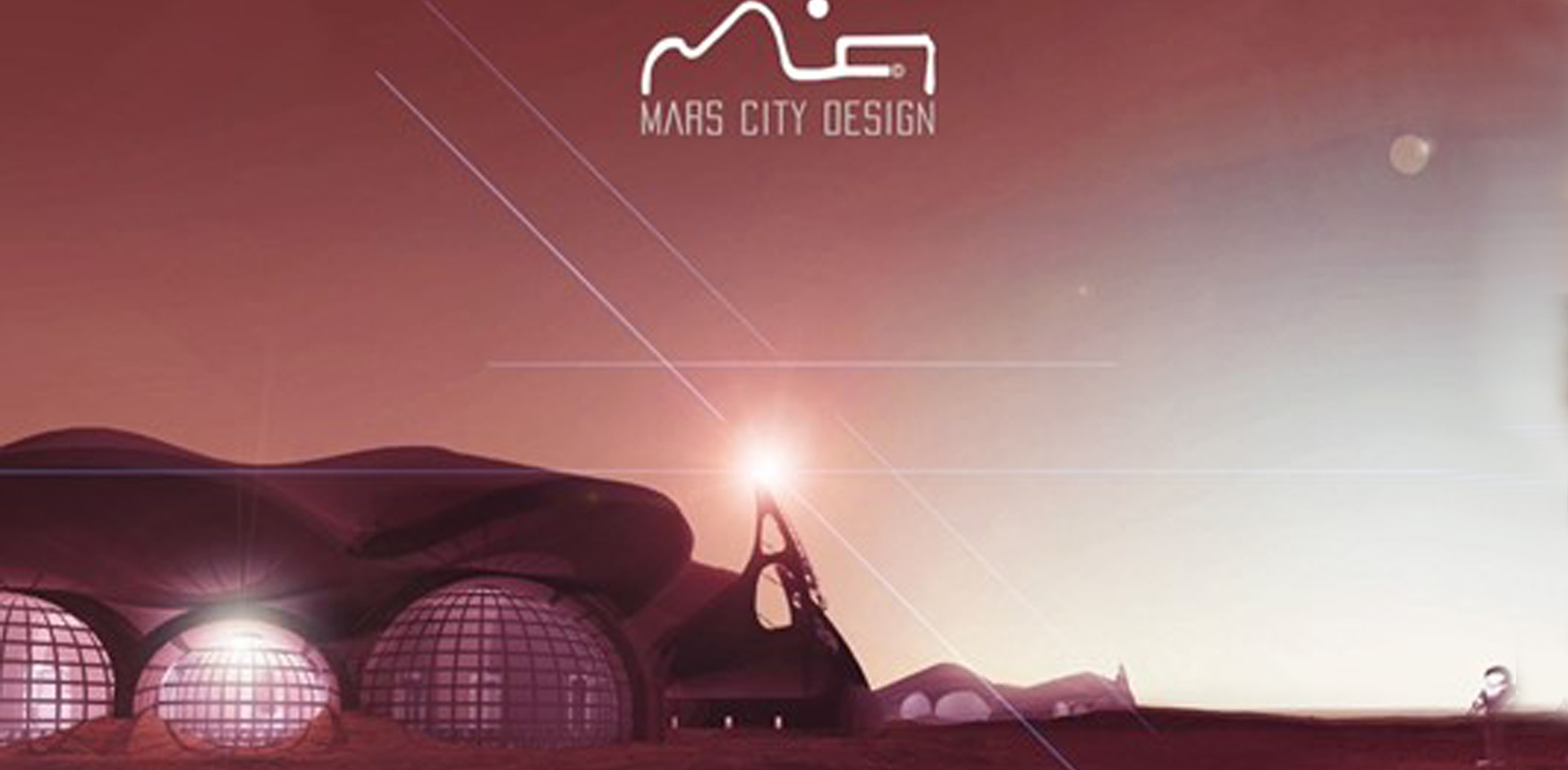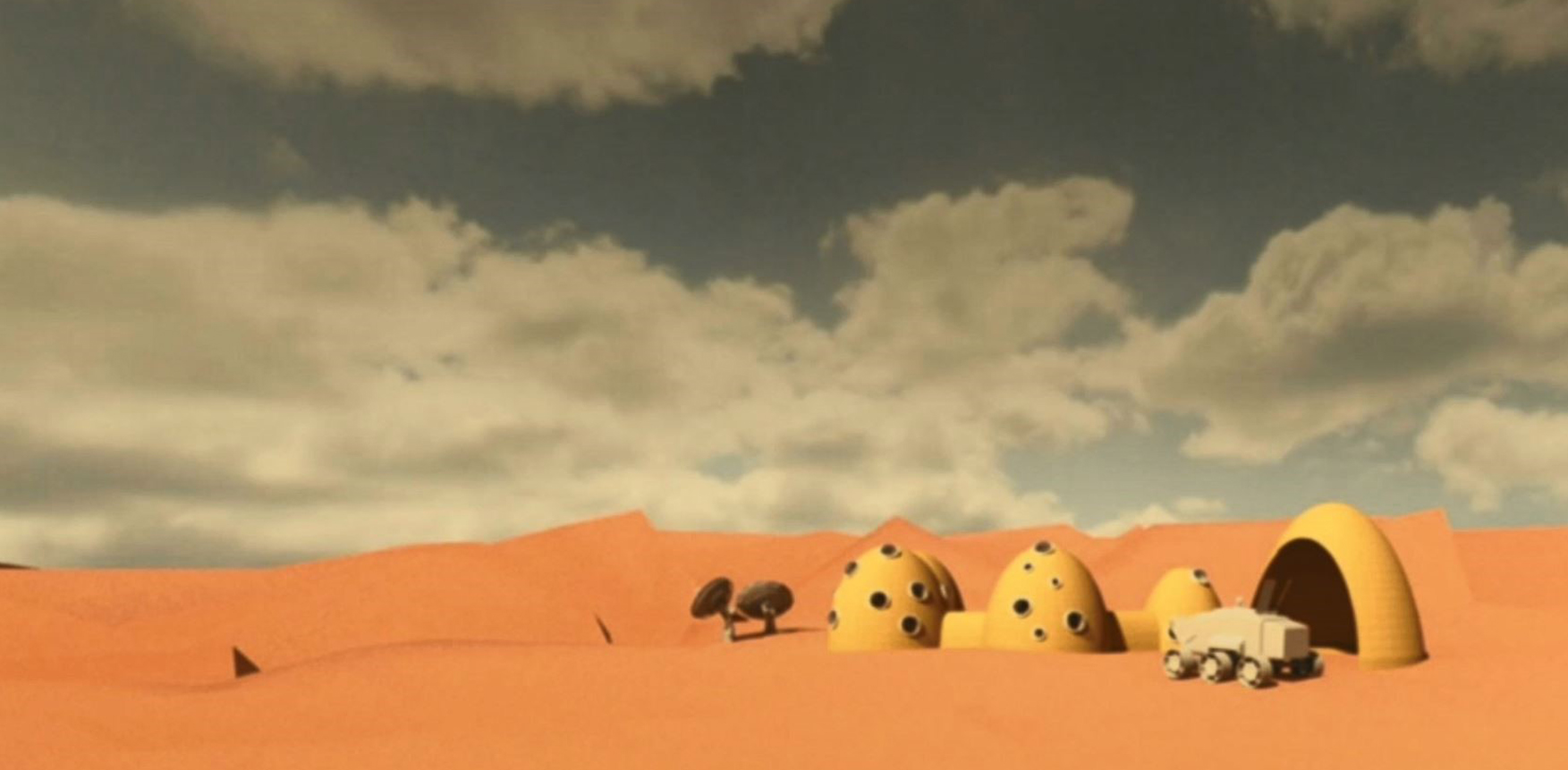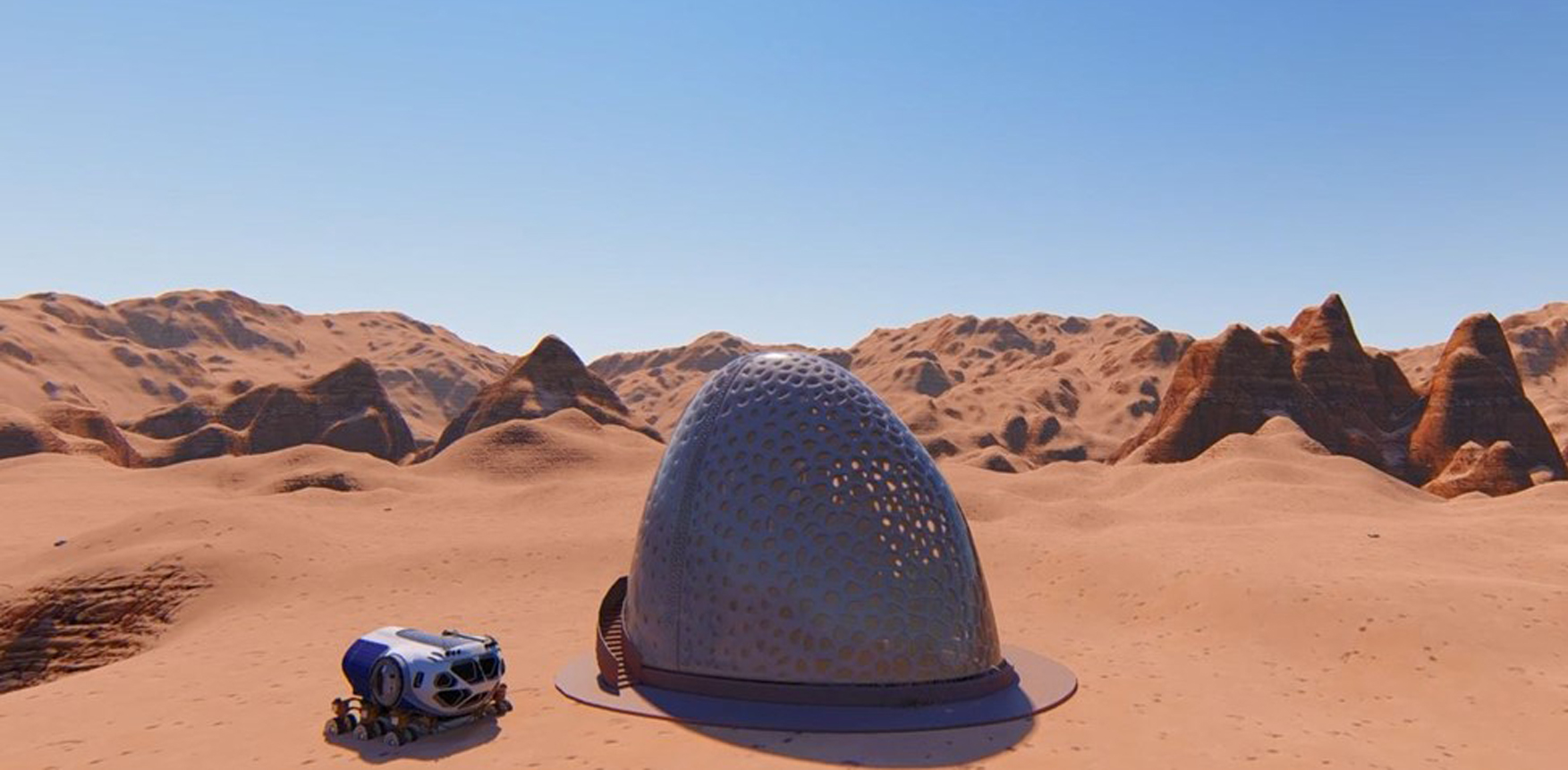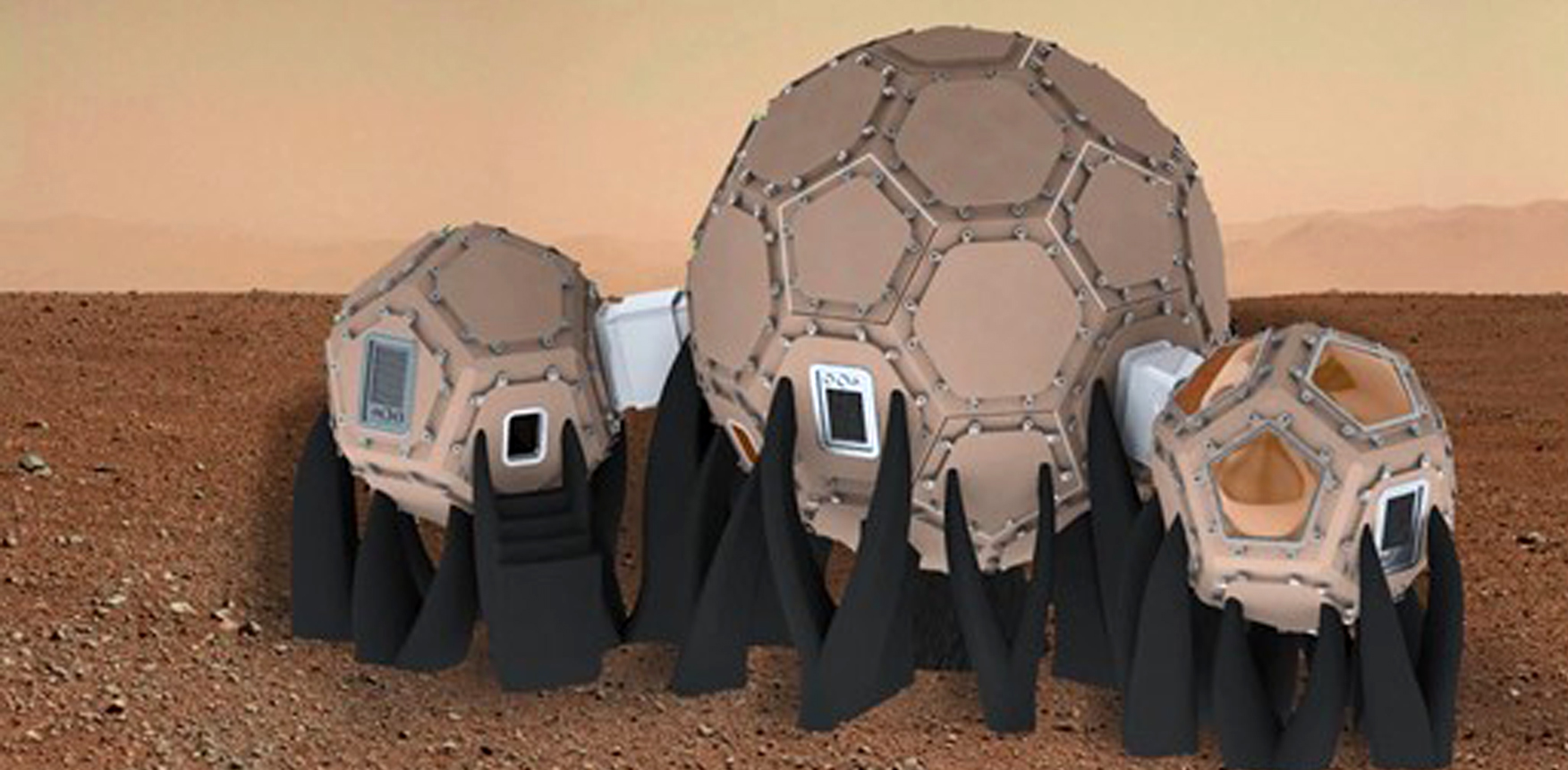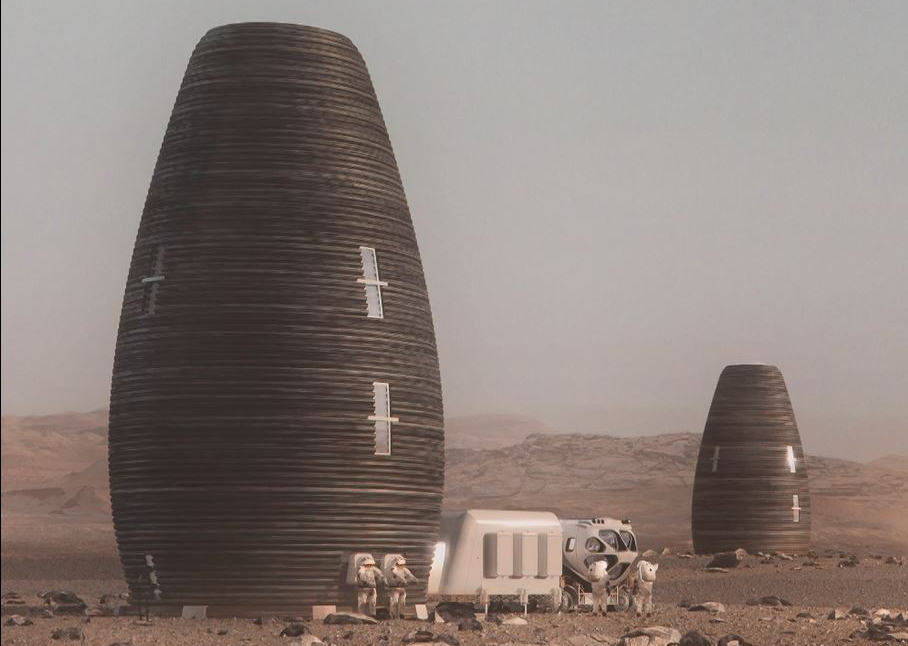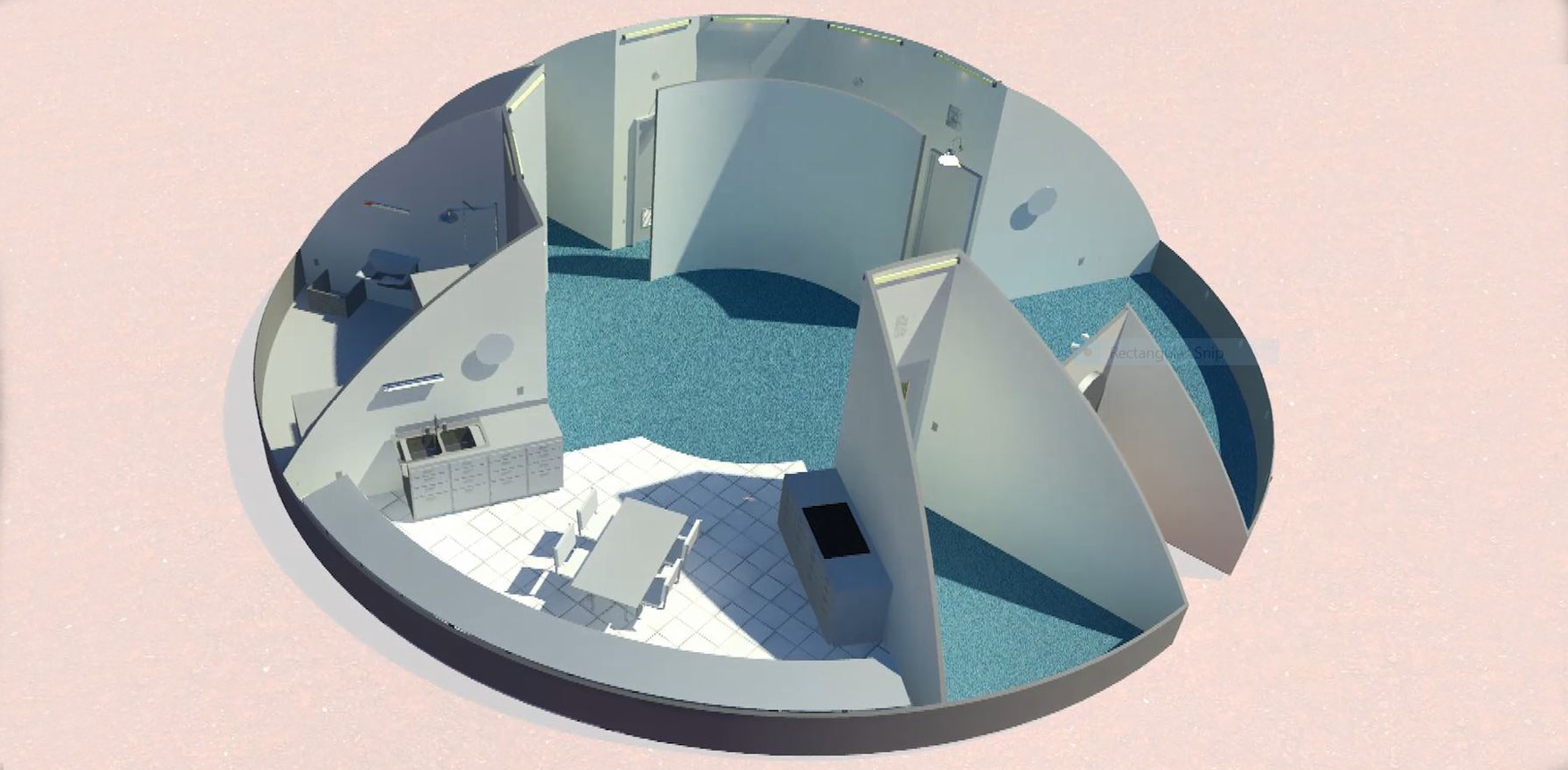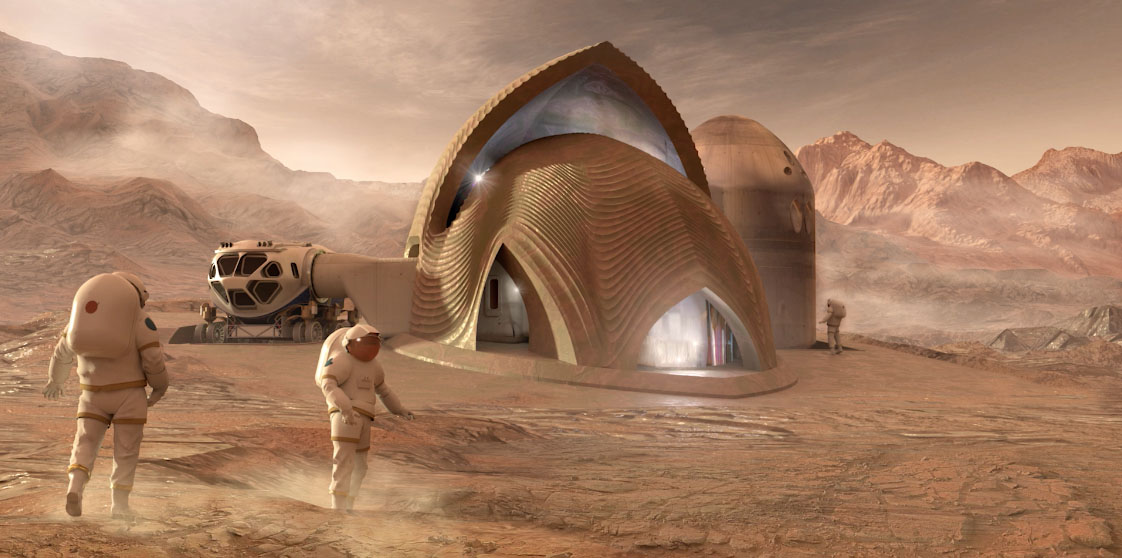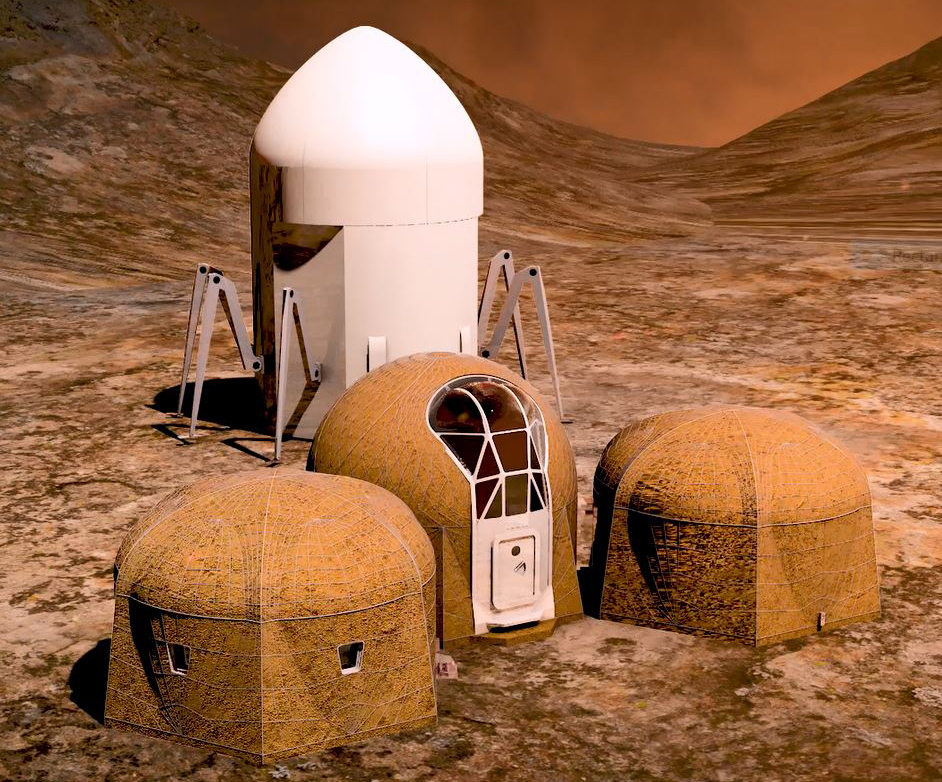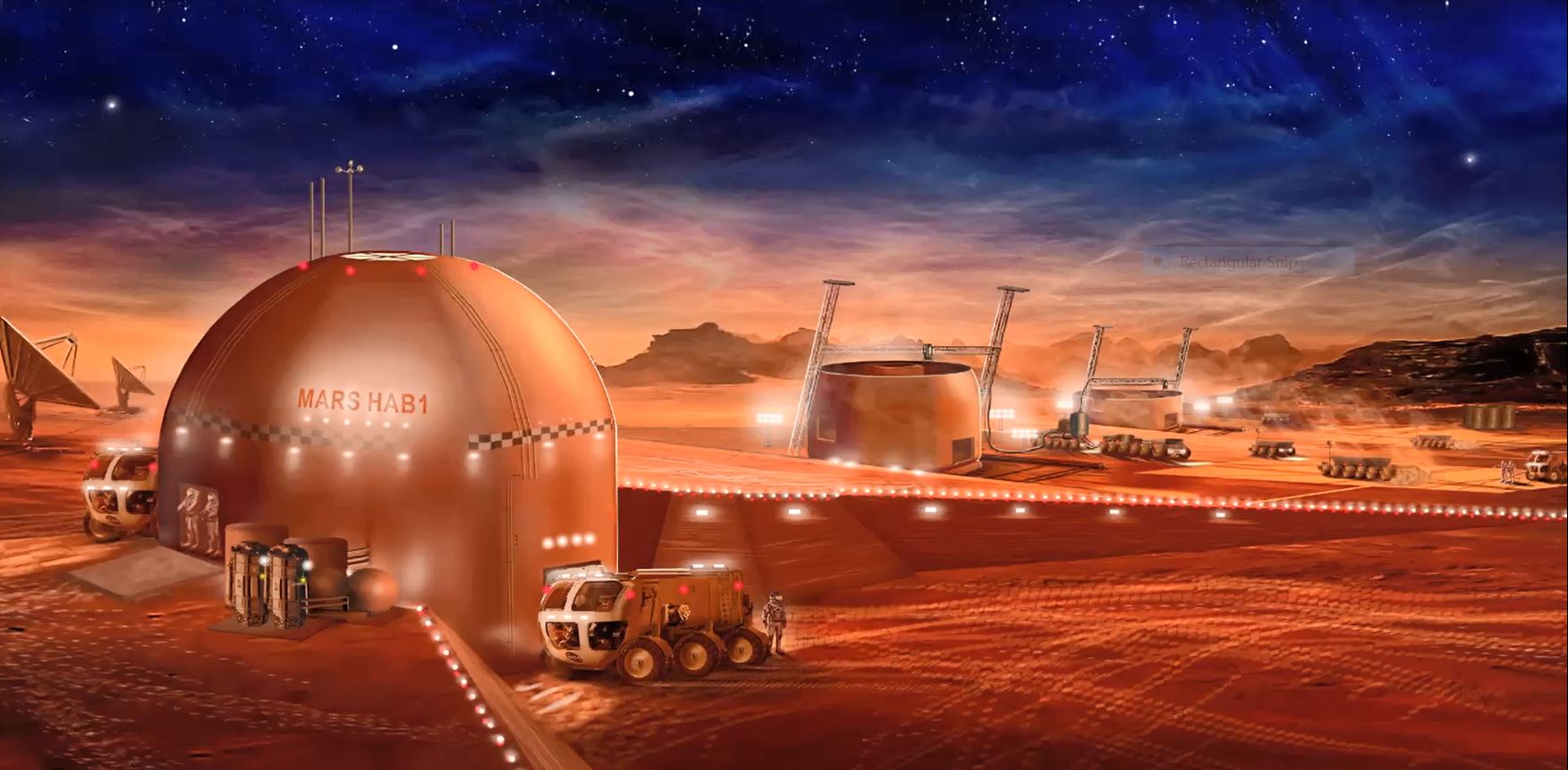NASA’s 3D-Printed Habitat Challenge is challenging teams of citizen inventors to push the state of the art of additive construction to design and build sustainable shelters for humans to live on Mars. Previous levels of the challenge have resulted in advanced habitat concepts, material compositions and printing technologies. The current stage (Phase 3: Level 1) of the multi-level contest challenges participants to prepare digital representations of physical and functional characteristics of a house on Mars using Building Information Modeling (BIM) software tools.
The habitat must comprise 1,000 square feet of living space to support four astronauts for one year and include plans for systems such as life support, mechanical and electrical, spacesuit and rover hatches, and plumbing.
“This stage of the competition asks the participants to design habitats that will combine shelter with critical survival systems,” said Monsi Roman, program manager for the Centennial Challenges Program. “We are asking them to look beyond the physical structure into the needs of our future explorers.”
Eighteen teams submitted their designs on May 16, and judges have selected the top 10 teams that will continue to compete for $100,000 in prize money that will be awarded to the top five teams in July. The teams will be evaluated by a panel of subject matter experts from NASA and industry.
The teams, listed in alphabetical order, are:
- ALPHA Team – Marina Del Rey, California
- Colorado School of Mines and ICON – Golden, Colorado
- Hassell & EOC – San Francisco
- Kahn-Yates – Jackson, Mississippi
- Mars Incubator – New Haven, Connecticut
- AI. SpaceFactory – New York
- Northwestern University – Evanston, Illinois
- SEArch+/Apis Cor – New York
- Team Zopherus – Rogers, Arkansas
- X-Arc – San Antonio
“There is a great breadth in use of technology and 3D-modeling skills among the judges that range from Building Information Modeling software developers to the most sophisticated applications of virtual design and construction,” said Pete Carrato, lead judge and corporate manager of Building Information Modeling at challenge sponsor Bechtel. “Each team’s submission is a view into the future of developing surface-based facilities on Mars.”
The goal of the 3D-Printed Habitat Challenge is to foster the development of technologies to manufacture a habitat using local indigenous materials with, or without, recyclable materials. The vision is that autonomous machines will someday be deployed in deep space destinations, including Mars, to construct shelters for human habitation. On Earth, these same capabilities could be used to produce affordable housing wherever it is needed or where access to conventional building materials and skills are limited.
The challenge, which began in 2014, is structured in phases:
- Phase 1, the Design Competition, required teams to submit architectural renderings and was completed in 2015. ($50,000 prize purse)
- Phase 2, the Structural Member Competition, focused on material technologies, requiring teams to create structural components. It was completed in 2017. ($1.1 million prize purse)
- Phase 3 (current), the On-Site Habitat Competition, challenges competitors to fabricate sub-scale habitats, and has five levels of competition – three construction levels and two virtual levels. For the virtual levels, teams must use BIM software to design a habitat that combines allowances for both the structure and systems it must contain. The construction levels challenge the teams to 3D-print elements of the habitat, culminating with a one-third-scale printed habitat for the final level. ($2 million prize purse)
The 3D-Printed Habitat Challenge is managed through a partnership with NASA’s Centennial Challenges Program and Bradley University in Peoria, Illinois. Bradley University has partnered with sponsors Caterpillar, Bechtel and Brick & Mortar Ventures to administer the competition. NASA’s Centennial Challenges program is part of the agency’s Space Technology Mission Directorate, and is managed at NASA’s Marshall Space Flight Center in Huntsville, Alabama.
For information about the 3D-Printed Habitat Challenge, visit:
For information about NASA’s Centennial Challenges Program, visit:

























